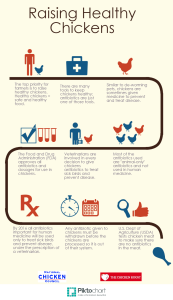Raising healthy chickens is important to us, and we recognize that consumers want to better understand how their food is raised.
Chicken is America’s favorite protein for a reason. For decades, the chicken industry has evolved its products to meet ever-changing consumer needs and preferences. Protecting our animals’ health and wellbeing is where we start. Without healthy chickens our members would not be in business.
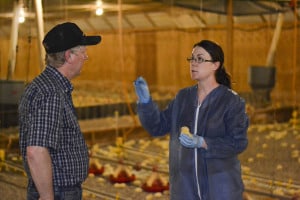
The use of antibiotics is one of many important tools in the treatment of human and animal disease. Preserving their effectiveness, both in humans and animals, is a responsibility we take seriously and work continuously with animal health companies, our farmers and our veterinarians to determine when an antibiotic is really needed.
We believe that providing a sustainable food supply will depend on our offering choices and a balanced approach to animal wellbeing. The amazing variety of chicken products today allows people to choose products that take into account many factors, including taste preference, personal values, affordability and chickens raised without antibiotics.
We understand that consumers have questions and concerns about how and why antibiotics are used to treat and prevent disease in livestock and poultry. We hope this information will help to answer those questions and address some of those concerns.
How is the chicken industry responding to updated FDA guidelines for antibiotic treatment of poultry and livestock?
All along, chicken producers have adhered to strict government regulations regarding antibiotic use, using antibiotics responsibly.
Chicken producers have proactively and voluntarily taken steps toward finding alternative ways to control disease while reducing antibiotic use; phasing out those that most critical to human medicine. The industry has fully cooperated with the Food and Drug Administration (FDA), and many poultry and pharmaceutical companies are moving far in advance of regulatory deadlines for compliance. Two classes of antibiotics that FDA deems critically important to human medicine, especially for treating foodborne illness in humans—flouroquinolones and cephalosporins—have already been phased-out of chicken production for a number of years.
The industry also supports FDA’s proposed Veterinary Feed Directive (VFD) that ensures that all antibiotics administered to food producing animals are only done so under the supervision and prescription of licensed veterinarians. In fully cooperating with FDA on these measures, both chicken producers and animal health companies continue to preserve the value and effectiveness of antibiotics used to treat human illness and decrease the resistance of foodborne pathogens.
The bottom line is that we’re all interested in doing the right thing. Not only are we all consumers, but chicken producers also have a vested interest in protecting the effectiveness of antibiotics, for the welfare of their animals. To do any differently would not make sense from a moral or business standpoint.
What is the common industry practice when it comes to administering antibiotics to chickens?
One of the most important and potentially devastating diseases we have in poultry is called coccidiosis, caused by coccidia – tiny little microscopic protozoa – that upset the normal gut environment of an animal and causes malabsorption of important nutrients and can result in unnecessary suffering or even death. Coccidia are common in puppies, kittens, young chickens and other animals – whether they’re raised outdoors, indoors, are a farm animal or a house pet.
There’s a class of antibiotics called ionophores and another group of medicines called non-antibiotic coccidiostats (not antibiotics) which are used to prevent this disease. They are not growth promoters and have no FDA-approved use for growth promotion. It is important to note that ionophores and non-antibiotic coccidiostats are not used in human medicine. Most chickens are given an ionophore or a non-antibiotic coccidiostat for an FDA-approved duration to prevent this intestinal disease, thus preventing the overuse of potentially medically important antibiotics in treatment of sick birds.
Are ionophores and non-antibiotic coccidiostats used to promote growth in chickens?
Ionophores and non-antibiotic coccidiostats are used to prevent disease in chickens and reduce the need for intensive medical treatment for fatal diseases. While FDA currently requires them to be labeled as “growth promotants,” when combined with an ideal living environment and nutritious feed, healthy chickens naturally grow to their full potential—all without the use of hormones and steroids (which have been prohibited under U.S. federal law for use in raising chickens for more than 50 years). Growth is a positive outcome of keeping chickens healthy and disease-free, and healthy birds improve product quality and food safety.
Why is this use necessary in raising chickens?
The top priority of farmers and chicken companies is to raise healthy chickens, because healthy chickens are directly related to a safe food supply.
There are responsible, approved standards of veterinary treatment that benefit animal welfare and human health by reducing the need for heavier doses of antibiotics later on in the process, in the event of widespread disease.
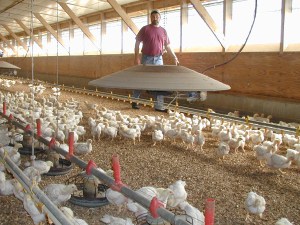 Much like a companion animal veterinarian would use de-worming compounds to prevent illness in a puppy (e.g. heartworm medication), chicken producers and veterinarians use compounds to prevent and treat disease in the birds they raise in the field. Waiting until the disease actually takes hold would pose animal welfare issues and likely reduce the effectiveness of antibiotic treatment. Treating animals that are clinically ill would require even greater use of antibiotics; and, in many cases, those antibiotics used for treatment could be ones considered medically important for humans. Preventing the disease is prudent veterinary medicine – and the right thing to do.
Much like a companion animal veterinarian would use de-worming compounds to prevent illness in a puppy (e.g. heartworm medication), chicken producers and veterinarians use compounds to prevent and treat disease in the birds they raise in the field. Waiting until the disease actually takes hold would pose animal welfare issues and likely reduce the effectiveness of antibiotic treatment. Treating animals that are clinically ill would require even greater use of antibiotics; and, in many cases, those antibiotics used for treatment could be ones considered medically important for humans. Preventing the disease is prudent veterinary medicine – and the right thing to do.
Prevention of the disease prevents unnecessary suffering and prevents the overuse of potentially medically important antibiotics in treatment of sick birds.
Are antibiotics that are used in human medicine used for weight gain and growth promotion in chickens?
There is small percentage of antibiotics that are currently approved by FDA for use in livestock and poultry, which also have use in human medicine. Their primary use is not for weight gain or growth promotion, but to prevent a disease called necrotic enteritis – an infection in the bird’s intestine caused by the bacteria Clostridium. Along with coccidiois, necrotic enteritis is another of the two most potentially devastating bacterial diseases in modern broiler flocks. If not prevented, it can cause dehydration, loss of appetite, diarrhea and rapid death.
Both FDA and the World Health Organization (WHO) rank antibiotics relative to their importance in human medicine. The highest ranking is “critically important.” Antibiotics in this category are used sparingly to treat sick birds. Antibiotics in other less-important classes may be used in chicken production to maintain poultry health and welfare, including for disease prevention, control and treatment purposes.
Antibiotics themselves and their dosage rates have been approved by FDA. FDA approved dosage rate for disease prevention also has the benefit of growth promotion because healthy birds grow to their full potential.
While minimally used in raising chickens, by December 2016, antibiotics that are important to human medicine will be labeled for use in food animals only to address disease, and not to promote growth, and will be used exclusively under the supervision and prescription of a veterinarian. To date, FDA reports 31 affected products have been withdrawn from marketing or sale in the United States. In the closing months of this year, FDA will provide a six-month update on its progress.
What happens if birds get sick?
Just like people, animals get sick, and treating illness is a responsible part of animal care. Even if you have the best animal health plan, some chickens are going to be exposed to infections that can only be cured with antibiotics. Veterinarians have a responsibility to treat those animals in a responsible and targeted manner, for a limited duration under FDA-approved guidelines.
Who regulates the feed given to chickens?
Any ionophore, antibiotic or non-antibiotic coccidiostat must go through a rigorous approval process by the manufacturer and the FDA before being approved for use. USDA monitors withdrawal times of any medicine administered, ensuring that it is out of the animal’s system prior to slaughter.
 Any feed mill that makes feed which contains an FDA-approved and regulated product, like an antibiotic, is subject to FDA authority and inspection. These mills keep detailed records of antibiotic use. The FDA can and does inspect the mills unannounced, any time they want. This is not new. The information is available to FDA and regulators, whenever they want to go see it. The feed mill data system is the repository of the information. Feed tickets on the other hand are mostly a way for the company to confirm to the farmer that a certain amount of feed was delivered and what was in it. The feed truck driver and farmer may not see each other, so the ticket serves as a way to relay more information about the feed delivered.
Any feed mill that makes feed which contains an FDA-approved and regulated product, like an antibiotic, is subject to FDA authority and inspection. These mills keep detailed records of antibiotic use. The FDA can and does inspect the mills unannounced, any time they want. This is not new. The information is available to FDA and regulators, whenever they want to go see it. The feed mill data system is the repository of the information. Feed tickets on the other hand are mostly a way for the company to confirm to the farmer that a certain amount of feed was delivered and what was in it. The feed truck driver and farmer may not see each other, so the ticket serves as a way to relay more information about the feed delivered.
What are some common ionophores, antibiotics and non-antibiotic coccidiostats that are approved by the FDA to help keep chickens healthy?
- Bacitracin: is an antibiotic used to prevent necrotic enteritis in broilers, an infection caused by the bacteria Clostridium. Bacitracin is found most commonly as a topical preparation in human medicine, such as triple antibiotic ointments but is not used for any other purpose in humans. It is not on the list of antibiotics considered by the FDA as medically important in humans.
- Chlortetracycline: is a Tetracycline antibiotic that is primarily used in broilers for preventing and treating diseases. It will be phased out for growth promotion purposes in livestock and poultry under the FDA’s guidance plan.
- Decoquinate: is not an antibiotic. It is a non-antibiotic coccidiostat used in veterinary medicine for the control of coccidiosis, a debilitating protozoal infection in poultry. Decoquinate has no human usage.
- Diclazuril: is not an antibiotic. It is a non-antibiotic coccidiostat used in veterinary medicine for the control of coccidiosis, a debilitating protozoal infection in poultry. Diclazuril has no human usage.
- Naracin: is an ionophore used for the prevention of coccidiosis and has no human usage.
- Nicarbazin: is not an antibiotic. It is a non-antibiotic coccidiostat used for prevention and control of coccidiosis in broilers. When combined with naracin, makes the brand name product, “Maxiban.” Nicarbazin has no human usage.
- Monensin: is an ionophore used for the prevention of coccidiosis and has no human usage.
- Penicillin: is an antibiotic that is used very infrequently in broiler production. Its only use is to treat flocks that succumb to gangrenous dermatitis, another clostridial disease – which is uncommon, but has occurred at a low rate. Penicillin use has not been a standard practice for the purposes of growth promotion in broilers, but it will be phased out for growth promotion purposes in livestock and poultry under the FDA’s guidance plan.
- Robenedine Hydrochloride: is not an antibiotic. It is a non-antibiotic coccidiostat used in veterinary medicine for the control of coccidiosis, a debilitating protozoal infection in poultry. Robenedine has no human usage.
- Tylosin: is a Macrolide antibiotic that is used in veterinary medicine to prevent necrotic enteritis in broilers, an infection caused by the bacteria Clostridium. It is a medically important antibiotic and its use will be phased out for growth promotion purposes in livestock and poultry under the FDA’s guidance plan.
- Virginiamycin: is a Streptogramin antibiotic used strategically to prevent necrotic enteritis, an infection caused by the bacteria Clostridium. It is a medically important antibiotic and its use will be phased out for growth promotion purposes in livestock and poultry under the FDA’s guidance plan.
Are there antibiotics in the chicken I eat?
No – all chicken meat is “antibiotic-free.” If an antibiotic is used on the farm, federal rules require the antibiotics to have cleared the animals’ systems before they can be slaughtered. For approved antibiotics, FDA and the U.S. Department of Agriculture (USDA) have extensive monitoring and testing programs to make sure that food at the grocery store does not contain antibiotic residues.
What is antibiotic resistance?
Some bacteria possess the natural genetic capability to survive in the presence of certain antibiotics, and exposure to such antibiotics results in a natural selection favoring those bacteria, which then become predominant. In simple terms, in the face of a threat to survival, some bacteria put up their best defenses. Other bacteria are naturally resistant to certain antibiotics.
Is antibiotic use in chicken production creating “Superbugs?”
As the Food and Drug Administration (FDA) has stated, “it is inaccurate and alarmist to define bacteria resistant to one, or even a few, antibiotics as “Superbugs” if these same bacteria are still treatable by other commonly used antibiotics. Most recently, the strains of Salmonella Heidelberg associated with the outbreak on the West Coast were sensitive to the most commonly recommended and prescribed antibiotics used to treat infections with Salmonella. Health care providers for the people who were ill had the most common antibiotics used to treat foodborne illnesses available to them and they remain effective.
For those antibiotics that are FDA-approved for use in raising chickens, the majority of them are not used in human medicine and therefore do not represent any threat of creating resistance in humans. While minimally used in raising chickens, by December 2016, antibiotics that are important to human medicine will be labeled for use in food animals only to address disease and to be used exclusively under the supervision of a veterinarian.
What does the CDC say about the current state of antibiotic resistant threats in the U.S.?
While the poultry industry is taking steps to ensure the appropriate use of antibiotics, the CDC continues to point to the overreliance on antibiotics in human medicine as the leading cause of bacterial antibiotic resistance. The CDC has also stated that most acute problem with antimicrobial resistance is with hospitals, and the most resistant organisms in hospitals are emerging in those settings, because of poor antimicrobial stewardship among humans.
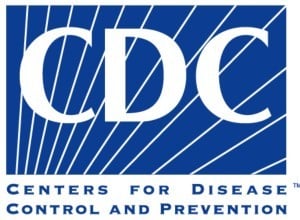 The recent CDC report “Antibiotic Resistance Threats in the United States, 2013” used three threat levels to rank 18 bacteria-specific resistance threats that, collectively, comprise the public health problem referred to as antibiotic resistance. Each of these 18 was examined in detail, including potential sources of those antibiotic-resistant bacteria. In only two of the threats – Campylobacter and non-typhoidal Salmonella – does CDC list food animals as a potential source of antimicrobial resistance. All others are unrelated to food animals. Much of the public discourse combines the 16 community- and hospital-acquired pathogens with food animals, which diverts attention from devoting more needed resources to monitoring, surveillance and risk mitigation.
The recent CDC report “Antibiotic Resistance Threats in the United States, 2013” used three threat levels to rank 18 bacteria-specific resistance threats that, collectively, comprise the public health problem referred to as antibiotic resistance. Each of these 18 was examined in detail, including potential sources of those antibiotic-resistant bacteria. In only two of the threats – Campylobacter and non-typhoidal Salmonella – does CDC list food animals as a potential source of antimicrobial resistance. All others are unrelated to food animals. Much of the public discourse combines the 16 community- and hospital-acquired pathogens with food animals, which diverts attention from devoting more needed resources to monitoring, surveillance and risk mitigation.
Still, by December 2016, antibiotics that are important to human medicine will be labeled for use in food animals only to prevent, control or treat disease and to be used exclusively under the supervision of a veterinarian.
Could the use of these drugs to keep chickens healthy and prevent disease lead to antibiotic resistance in humans?
The issue of antibiotic resistance is very complex, and it’s not black and white.
We know antibiotic resistance can emerge in animals and can transfer to humans, sometimes making them sick. The question is: How does this happen? And more importantly: How can we prevent it? Chicken producers have several programs and layers of protection in place to prevent antibiotic resistance from emerging in animals and transferring to humans, including: a stringent FDA drug review process; strictly regulated withdrawal times for those drugs; Hazard Analysis Critical Control Point (HACCP) plans which provide a scientific method of identifying and preventing food safety hazards and managing risk; strict and continual monitoring; residue checks and surveillance programs. All of these are designed to prevent antibiotic resistance from happening.
Several scientific, peer-reviewed risk assessments (that measure what does happen) demonstrate that resistance that is emerging in animals and transferring to humans does not happen in measurable amounts, if at all.¹
Still, chicken producers are phasing out subtherapeutic or “growth uses” of antibiotics important to treating humans.
It is important to note that antibiotic resistance is a characteristic of bacteria, not chickens or people. So, what can transfer between people and animals are antibiotic resistant bacteria, not antibiotic resistance. Antibiotic resistance is a universal phenomenon in bacteria. To say that an antibiotic resistant strain of bacteria was isolated from a person or flock is almost meaningless. Rather, it is normal, regardless of antibiotic use.
Some poultry companies never use antibiotics that are used in human medicine, unless to treat sick birds. Why don’t all companies do this?
Chicken companies are in the business of providing choice. The amazing variety of chicken products today allows people to choose products that take into account many factors, including taste preference, personal values and affordability. Finding ways to raise chickens without any antibiotics is the latest example of an industry committed to innovation, producing a wide range of chicken products for a wide range of consumers.
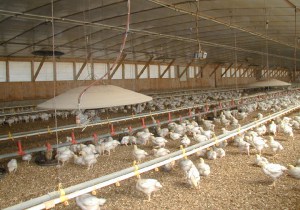 The administration of antibiotics is only one FDA-approved tool to keep chickens healthy. It is not a silver bullet. Companies use a variety of management tools to keep birds healthy including: more individualized nutrition plans to promote stronger gut health; better vaccination programs; ionophores and non-antibiotic coccidiostats to prevent coccidia infection; barns with better air circulation and temperature controls for year-round comfort; and additional training programs and education efforts for farmers and service technicians. But even still, some flocks get sick and there is a necessary time to treat these birds with antibiotics.
The administration of antibiotics is only one FDA-approved tool to keep chickens healthy. It is not a silver bullet. Companies use a variety of management tools to keep birds healthy including: more individualized nutrition plans to promote stronger gut health; better vaccination programs; ionophores and non-antibiotic coccidiostats to prevent coccidia infection; barns with better air circulation and temperature controls for year-round comfort; and additional training programs and education efforts for farmers and service technicians. But even still, some flocks get sick and there is a necessary time to treat these birds with antibiotics.
A “raised without antibiotics” label is typically only one of a company’s product lines. Some flocks on a no antibiotic program may get sick, just like other flocks, and some have to be treated with antibiotics. These flocks that have been treated with antibiotics are no longer eligible to be marketed as “raised without antibiotics.” This is something most people do not understand. A no antibiotics program is not some magical program for producing disease-free birds. Rather, it’s a program which intends to raise birds without antibiotics and labels those which are successfully raised without antibiotics as “raised without antibiotics.” Those chickens that must be treated with antibiotics are labeled with another designation.
Why not just ban the use of antibiotics in livestock and poultry?
First, this would have a detrimental effect on the health and welfare of the animals. Second, using antibiotics in targeted ways to prevent disease is key to minimizing antibiotic use overall. Antibiotic use policies in Europe and Denmark, for example, have demonstrated that banning low doses of antibiotics to promote growth has resulted in more widespread illness in farm animals as well as the increased use of antibiotics to treat sick animals.²³ Ultimately, there has been no demonstrable improvement in public health.
I read that 80 percent of all antibiotics used in America are given not to people, but to farm animals. Is that true?
Eighty percent of antibiotics are consumed by farm animals but nearly one half (45 percent) of that total are animal-only antibiotics and belong to classes not used in human medicine, like ionophores. In addition, the differences in the amounts consumed are completely expected when comparing the size of the two populations, Americans at 307 million vs. animals at: 8.2 billion chickens/year (plus broiler breeders), 295 million laying hens, 270 million turkeys (plus turkey breeders), 88 million head of cattle, 66 million head of swine, 5 million head of sheep and 2.8 million head of goats. In fact, when both populations (humans vs. food-producing animals) are compared on a body weight basis, humans consume 10 times more antibiotics per unit of body weight than farm animals (Barber, D.A., 2001. JAVMA, 218 (10): 1559-1561).
The FDA has repeatedly said that one cannot draw definite conclusions from any direct comparisons between the quantity of antibiotics sold for use in humans and the quantity sold for use in animals.
Are veterinarians on the farm at all times?
All chicken farms are under a health program designed by a licensed veterinarian. The way the system works is that veterinarians train technicians to implement the program, recognize signs of sickness and disease, perform necropsies (bird autopsies) on the birds if needed, take and deliver 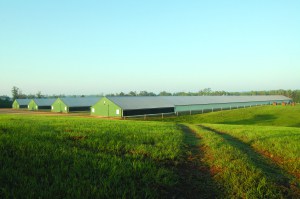 blood and fecal samples to the veterinarian, recognize lesions and then communicate all of that the veterinarian. The veterinarian cannot be on every farm at all times, but the technician is on the farm to work with the farmer once or twice every week. They are the eyes and ears for the veterinarian. The use of technology, tablets and smart phones to take videos, text pictures, etc. aids the technician to remain in constant contact with the veterinarian.
blood and fecal samples to the veterinarian, recognize lesions and then communicate all of that the veterinarian. The veterinarian cannot be on every farm at all times, but the technician is on the farm to work with the farmer once or twice every week. They are the eyes and ears for the veterinarian. The use of technology, tablets and smart phones to take videos, text pictures, etc. aids the technician to remain in constant contact with the veterinarian.
Does the FDA track antibiotic resistance?
The U.S. Food and Drug Administration (FDA) on August 14, 2014 released its National Antimicrobial Resistance Monitoring System (NARMS) 2011 Executive Report, showing mostly decreasing antimicrobial resistance trends.
The annual NARMS Executive Report focuses on resistance to antibiotics that are considered important in human medicine as well as multidrug resistance (described as resistance to three or more classes of antibiotics), according to the FDA. Under the NARMS program, samples are collected from human, food producing animals and retail meat sources, and tested for certain bacteria, specifically non-typhoidal Salmonella, Campylobacter, E. coli and Enterococcus, to determine whether such bacteria are resistant to various antibiotics used in human and veterinary medicine.
Among the key findings:
- Eighty-five percent of non-typhoidal Salmonella collected from humans, which includes Heidelberg, Hadar, Typhimurim, and Enteritidis serotypes, had no resistance to any of the antibiotics tested. (Non-typhoidal Salmonella refers to one of the 2,300 serotypes of Salmonella except for Typhi, Paratyphi A, Paratyphi B (tartrate negative) and Paratyphi C.)
- During its 16-year history, NARMS has found Salmonella resistance to ciprofloxacinto be very low (less than 0.5% in humans, less than 3% in retail meat, and less than 1% in animals at slaughter). Ciprofloxacin, one of the most common antibiotics to treat Salmonella infections in humans, belongs to a group of drugs called fluoroquinolones which were ceased for use in poultry in 2005.
- Multi-drug resistance in Salmonella from humans and slaughtered chickens was the lowest since NARMS testing began.
- Resistance to erythromycin, the antibiotic of choice to treat Campylobacter infections, in Campylobacter jejuni (C. jejuni) has remained at less than 4% in isolates obtained from humans, retail chicken and slaughtered chicken since testing began.
This data provides a strong case that the continued responsible use of antibiotics by poultry and livestock producers is aiding in the reduction of resistance in various foodborne pathogens. And, equally as important, that first-line antibiotics remain effective in treating foodborne illnesses.
###
1. Hurd, H.S., Doores, S., Dermot, H, Mathew, A., Maurer, J., Silley, P., Singer, R.S., and Jones, R.N.2004. Public Health Consequences of Macrolide Use in Food Animals: A Deterministic Risk Assessment. Journal of Food Protection.
Hurd, H.S., Malladi, S. 2008. A Stochastic Assessment of the Public Health Risks of theUse of Macrolide Antibiotics in Food Animals. Risk Analysis.
Cox, A., Popken, D.A., Mathers, J.J. 2009. Human Health Risk Assessment of Penicillin/Amino-penicillin Resistance in Enterococci Due to Penicillin Use in Food Animals. Risk Analysis.
Cox, A., Popken, D.A., Carnevale, R. 2007. Quantifying Human Health Risks from Animal Antimicrobials. Interfaces.
Wassenaar, T.M. 2005. Use of Antimicrobial Agents in Veterinary Medicine and Implications for Human Health. Critical Reviews in Microbiology.
Cox, A., Popken, D.A. 2009. Assessing Potential Human Health Hazards and Benefits from Subtherapeutic Antibiotics in the United States: Tetracyclines as a Case Study. Risk Analysis.
2. Danish Integrated Antimicrobial Resistance Monitoring and Research Programme (DANMAP) 2010 – Use of antimicrobial agents and occurrence of antimicrobial resistance in bacteria from food animals, food and humans
3. Phillips, Ian. 2007. Withdrawal of growth-promoting antibiotics in Europe
and its effects in relation to human health. International Journal of Antimicrobial Agents.
